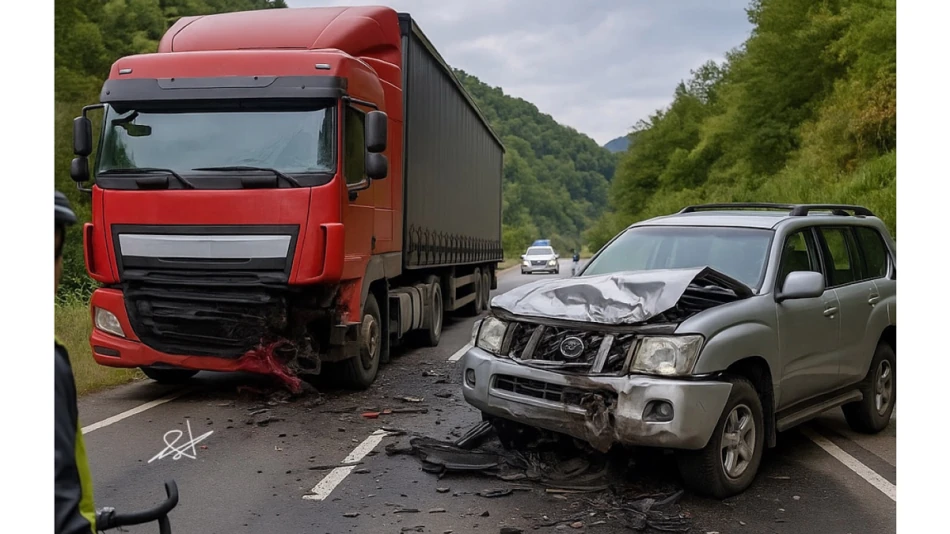
Top 5 Factors Contributing to Increased Traffic Accidents Abroad, Experts and Citizens Weigh In
UAE Citizens Face Rising Road Accident Risks During International Travel
Emirati citizens traveling abroad by road are experiencing a troubling surge in serious traffic accidents, prompting authorities to issue urgent safety warnings. Traffic experts and experienced drivers have identified five critical factors contributing to these incidents, ranging from unfamiliar traffic systems to inadequate trip preparation. The UAE's Ministry of Interior and foreign missions are now intensifying awareness campaigns as summer travel season peaks.
Five Key Risk Factors Behind International Driving Accidents
Citizens who have driven extensively in neighboring countries and international tourist destinations have pinpointed the primary causes of road accidents involving UAE nationals abroad. The most significant factor is the dramatic difference in geographical environments and traffic systems compared to the UAE's well-developed infrastructure.
Right-hand drive confusion tops the list of hazards. Many countries use right-hand drive vehicles with opposite traffic flow patterns, creating immediate disorientation for drivers accustomed to UAE road systems. This confusion becomes particularly dangerous during turns and lane changes.
Infrastructure disparities present another major challenge. Unlike the UAE's illuminated highways and modern road design, many international destinations feature unlit roads at night, winding mountain passes, or two-lane highways handling bidirectional traffic. European countries often rely solely on phosphorescent markers rather than street lighting, demanding heightened driver concentration.
Speed and reckless overtaking behaviors that might be manageable on UAE's multi-lane highways become lethal on narrow international roads. Citizens Abu Sultan, a veteran road traveler, noted that some drivers attempt to compress journey times through dangerous multi-vehicle overtaking maneuvers, especially at night.
Government Response and Safety Initiatives
The UAE government has mobilized multiple agencies to address this growing concern. In July, the Ministry of Foreign Affairs coordinated an emergency medical airlift for injured Emiratis following a severe traffic accident in Oman, highlighting the real-world consequences of inadequate road safety preparation.
The ministry's "Tawajudi" service now requires citizens to register their international travel plans, including destination details, family member counts, and visit duration. This system enables rapid response during emergencies and provides valuable data on travel patterns.
Embassy-Level Safety Campaigns
UAE embassies are issuing destination-specific guidance. The Ankara embassy recently emphasized the importance of ensuring passport names match vehicle ownership documents exactly, and understanding local driving license recognition requirements. These seemingly minor administrative details can prevent legal complications that distract from safe driving practices.
Expert Analysis: Why UAE Drivers Face Higher International Risks
Dr. Jamal Salem Al Ameri, traffic expert and Director General of the "Saed" Association, explains that UAE drivers face unique adaptation challenges when driving internationally. The country's exceptional road infrastructure and traffic management systems may inadvertently create overconfidence when facing less developed road networks.
The UAE advantage becomes a disadvantage when drivers encounter stray camels on remote highways, sudden construction zones without advance warning systems, or roads that lack the predictable lane markings and signage standards they're accustomed to domestically.
Al Ameri recommends mechanical vehicle inspections before international trips, with particular attention to tire suitability for snow, rocky terrain, or extended rainfall conditions. Vehicle maintenance standards that suffice for UAE driving may prove inadequate for challenging international environments.
Comparative International Context
The UAE's road safety challenges abroad mirror patterns seen with drivers from other highly developed automotive infrastructure countries. Singapore and South Korea have reported similar issues with their citizens experiencing higher accident rates when driving in less developed regions.
However, the UAE's unique position as a regional travel hub, combined with strong cultural preferences for family road trips to neighboring countries, creates particularly high exposure to these risks. The country's wealth enables extensive international travel, but its relatively young modern infrastructure means fewer citizens have experience with diverse driving conditions.
Market and Policy Implications
This safety crisis presents opportunities for several sectors. International driving preparation courses, specialized travel insurance products, and vehicle rental services catering to UAE citizens could see increased demand. Insurance companies may need to reassess risk profiles for UAE drivers abroad, potentially affecting premium structures.
From a diplomatic perspective, the UAE's proactive embassy involvement in driver education demonstrates soft power projection and citizen care that enhances the country's international reputation. However, continued high-profile accidents could impact tourism relationships with neighboring countries.
The government's systematic approach to this challenge—combining emergency response capabilities, preventive education, and diplomatic coordination—provides a model for other Gulf states facing similar issues as their citizens increase international travel.
Most Viewed News

 Sara Khaled
Sara Khaled






